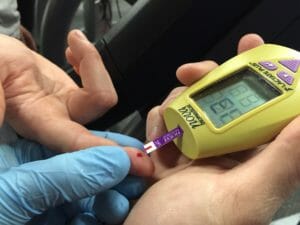When building training plans and during actual workouts, the determination of appropriate intensity for the workout is an area of much confusion for mountain athletes. Some sports, such as swimming and road or track running, rely on recent competitive performances to guide intensity by using percentages of race pace. Rock climbers can use grades (though these are admittedly flawed for a variety of reasons) to monitor intensity. But mountain athletes do not have such a straightforward metric for determining intensity because the effort it takes depends on factors that vary such as terrain, conditions, altitude, etc.
Training Intensity Monitoring Methods
For mountain athletes, another metric of effort needs to be used. Several methods have been used with varying degrees of success:
Perception
Perception is handy and the old standby. By this we mean how the exercise feels to you. What sensations are you noticing? Our body has many subtle and some not-so-subtle ways of giving us feedback. Both at a conscious and unconscious level our brain is interpreting all the feedback and creating a sensation of intensity. Unfortunately, individuals can have significantly different perceptions of the numerous different signals their brain is receiving, making perception unreliable especially for the inexperienced.
Blood Lactate
Blood lactate monitoring, while accurate and effective, is not practical for day-to-day intensity monitoring (though technological advances in this area may be coming). Given the chance, we use a lactate step test with individual athletes we are coaching. This gives us an accurate snapshot of that athlete’s lactate response on the day of the test. While reasonable generalizations can be inferred from this test, the main drawback, besides expense, is that it is hard to implement on a daily basis. Unless the test is done every few weeks, the daily training prescription going forward will not account for the effects of recent training and recovery.

Heart Rate Zones
Heart rate zones offer the easiest and most effective measure of intensity. A heart rate monitor will give precise, real-time data, measuring beats per minute (bpm) down to single-beat accuracy. While heart rate is not a perfect proxy for intensity of effort, it is still the best that mountain athletes have at their disposal.
However, it is best if each athlete can identify his or her intensity zones using a personalized metabolic marker rather than a formula based off a percentage of maximum heart rate. There is great individual variation in metabolic response to changes in intensity of exercise. These seemingly simple formulas are created from doing a statistical analysis of a large population. While the statistics are probably valid across that population, you have no idea how well they apply to you. We use some simple tests to determine two important metabolic events to which we can then anchor the intensity zones.
Ventilation
Ventilation (breathing rate and depth) provides real-time feedback on the metabolic process fueling the exercise at any given time and hence the intensity of that exercise. The drawback in the field (as opposed to a lab setting) is that we have only two ventilation markers of intensity. (Exercise physiologists call these the First and Second Ventilatory Thresholds, VT1 and VT2.) These markers are fairly accurate in terms of relaying information about the current metabolic state, and they give meaningful, actionable, and instantaneous information to the athlete and coach. The biggest shortcoming of the ventilatory feedback is its reliance on athlete sensitivity and the lack of measurable and recordable electronically generated data.
This ventilation metric can and should be used in conjunction with heart rate monitoring as the most meaningful prescription of intensity. When combined, these can give a much more useful and real-time look at which metabolic process is dominating ATP production at a given heart rate. With careful observation, an athlete can judge the actual intensity almost as well as if they were getting data from a Gas Exchange Test or a blood lactate test in a lab (the gold and silver standards). But this real-time field test is portable and goes with the athlete in every workout.
Conclusion
An athlete who self-monitors ventilation and heart rate during training is using the most meaningful method of monitoring training intensity.
This is Part 1 in a series of three articles. You can read the other two here:

